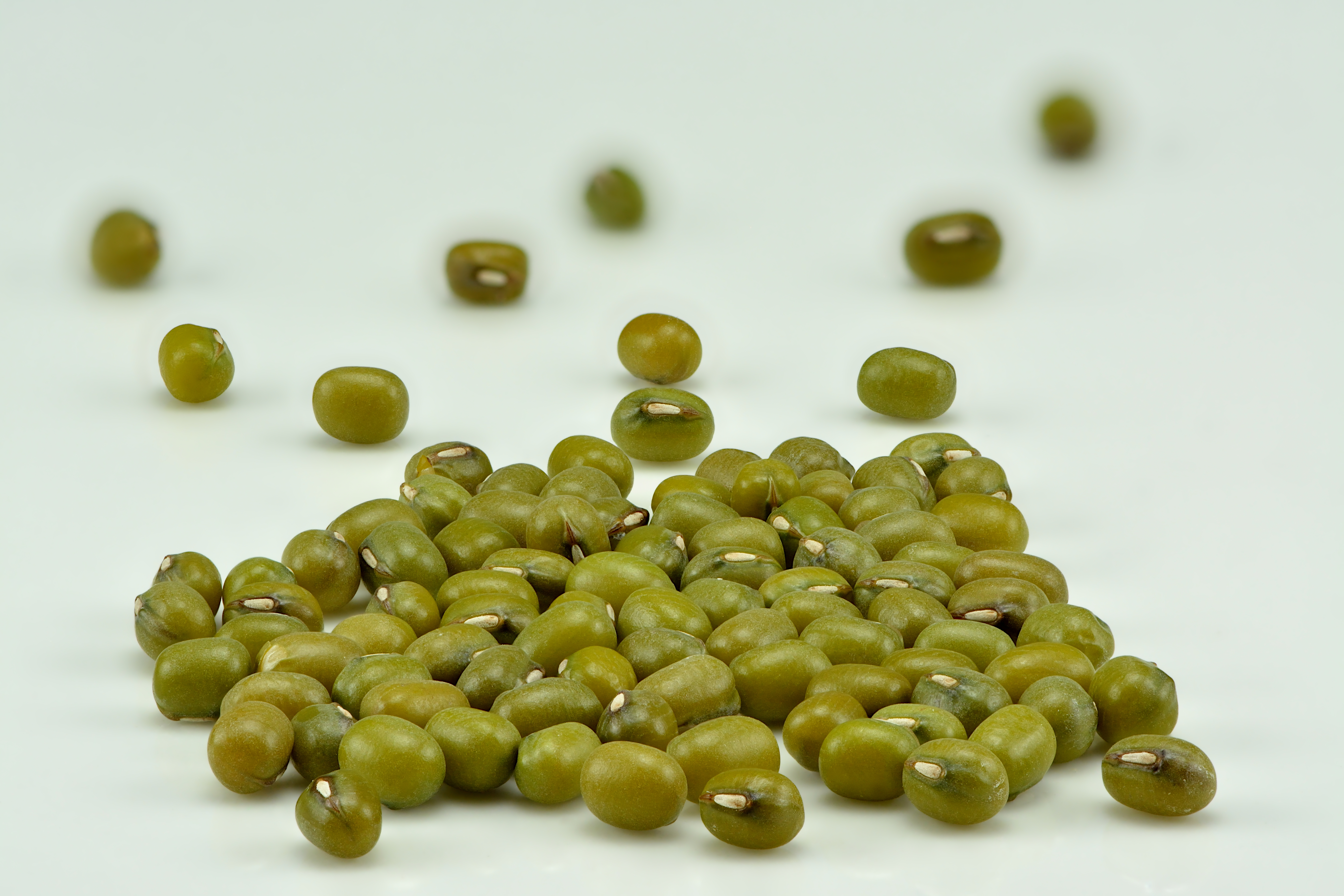Description
Green Gram is an upright hairy bean plant which can reach up to 1 m tall. The leaves have 3 leaflets and are dark green. The leaves are on long leaf stalks. There are oval stipules at the base of the leaf. It has small flowers that are pale yellow in colour and occur in bunches of 10–20 on the ends of long hairy stalks. The pods are black and straight. The pods contain 10– 20 seeds which are usually green or golden yellow. The colour of the beans can vary from green to black. They have a flat white hilum. There are approximately 2,000 varieties.
The beans can be eaten raw or roasted. They are added to soups and stews. They can also be fermented. The germinated sprouts can be used in salads and stir-fried dishes. The seeds can also be grounded and used for starch to make noodles.
Planting requirements
Planting season: November to February and May to August
Planting conditions:
| Propagation | Plants are grown from seeds and the seeds can be germinated for sprouts. Seeds germinate in 3–5 days |
|---|---|
| Planting method | Seeds can be scattered in broad areas or can be sown in small plots often 2–3 seeds in holes 50–60 cm apart. It normally requires phosphorus fertilizer for adequate growth |
| Soil | Green grams thrive in well-drained soil, rich in nutrients and a pH of 4.3-8.1. Weeds consume nutrients from the soil. So weeds should be removed when preparing the soil. Mulch with rice straw |
| Water | Need to maintain moisture throughout depending upon soil type and climatic conditions |
| Light | Need sunshine hour between 3.5 to 8.5 hr |
Growing conditions:
| Temperatures | It can grow where annual temperatures are from 8°C to 28°C |
|---|---|
| Soil | Green gram is cultivated in deep soil. Preferably loamy soil and sandy loamy soil. Water logging should be avoided |
| Water | Excessive watering can damage the yield. So stop watering 55 days after sowing the seeds. Water every 5 days for the first 3 weeks and then once a week |
| Pruning | Green gram does not require pruning. It's an annual crop that completes its lifecycle in one growing season |
| Weed control | Regular weeding is essential, especially during the first 3-4 weeks after sowing. Use shallow cultivation or mulching to suppress weeds. Hand weeding is preferred to avoid damaging the shallow root system |
Harvesting
Green pods are ready after about 2 months and ripe pods may take another 1–2 months. For ripe beans, the whole plant is harvested and dried before threshing.
Curing
After harvesting, green gram pods should be dried thoroughly in the sun for 2-3 days until the moisture content is reduced. This helps prevent mold growth and improves storage life.
Storage
Add vegetable oil and mix the dried green grams and store in an airtight container (ideally a clay pot) in a cool, dry place. Properly stored, they can last for up to a year.
Protecting your plants
Pest control
Pest type:
- Bean fly
- Aphids
- Whitefly
- Mites
- Leaf-eaters
- Blister beetle
- Pod borer
- Pod borer caterpillars
Symptoms:
- Bean fly: Damage at plant stage
- Aphids, whitefly, mites, leaf-eaters: Damage at pre-bloom stage
- Blister beetle, pod borer, pod borer caterpillars: Damage at flowering and pod-filling stages
Control method:
- Spray neem oil
- Maintain good crop rotation
Disease Control
Disease type:
- Powdery mildew
- Circaspora leaf spot
- Ascochyta blight
- Rust
- Yellow Mosaic Virus
Symptoms:
Powdery mildew: White powdery patches appear on leaves and other green parts which later become dull coloured.
Circaspora leaf spot: The spots are small and numerous, with a pale brown center and a reddish-brown margin. Similar spots can also be found on branches and pods.
Ascochyta blight:
- Symptoms include small circular brown spots on the leaves.
- Under favorable conditions, these spots rapidly enlarge and merge, causing blighting of leaves and buds.
- In severe infections, the entire plant may suddenly dry up.
- Lesions also develop on stems and petioles.
Rust:
- Numerous spots with pale brown centers and reddish-brown margins appear on leaves, branches, and pods.
- Defoliation occurs during flower and pod formation.
Yellow Mosaic Virus:
- Yellow patches or spots appear on leaves and pods.
- Infected plants produce small, distorted pods.
- Early infection may cause plant death before seed set.
Management:
- Use disease-resistant varieties
- Practice crop rotation
- Maintain proper plant spacing for good air circulation
- Remove and destroy infected plant parts
- Apply appropriate fungicides if necessary
- Control insect vectors for viral diseases
Sources
In addition to our General List of Sources (link), we used these specific references:
